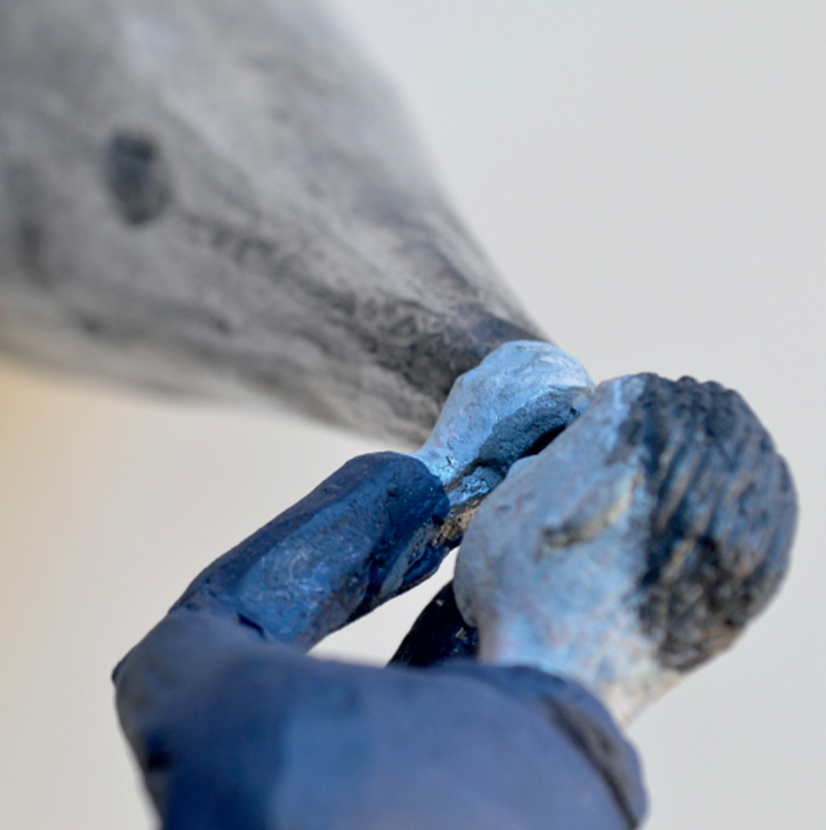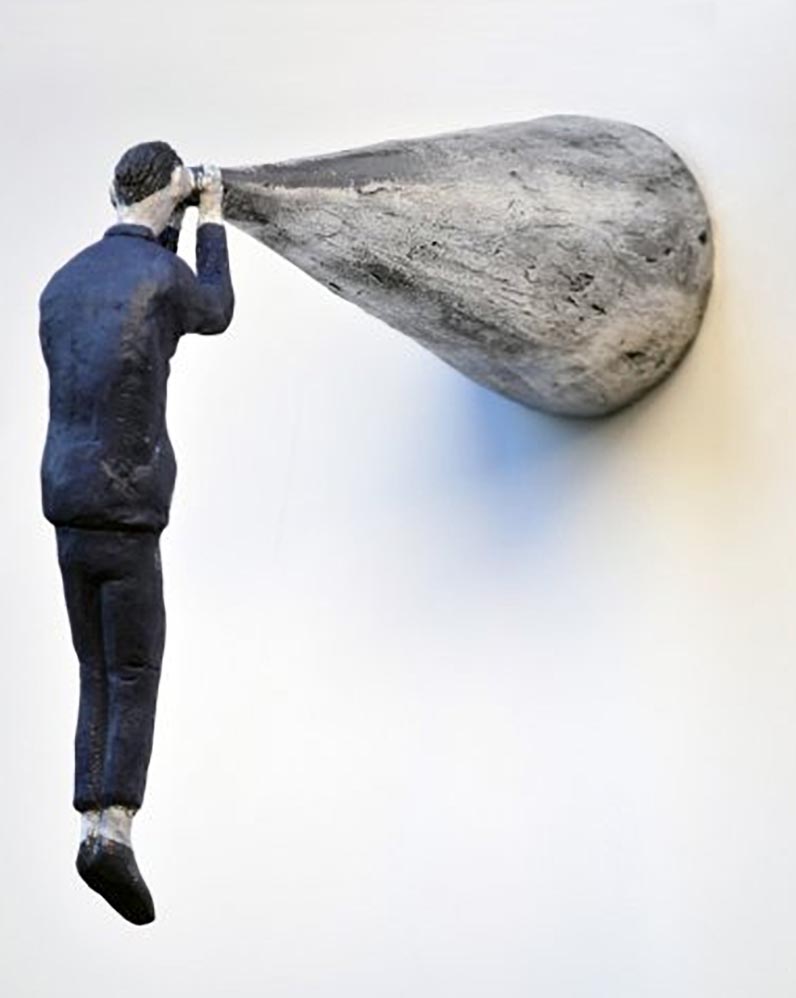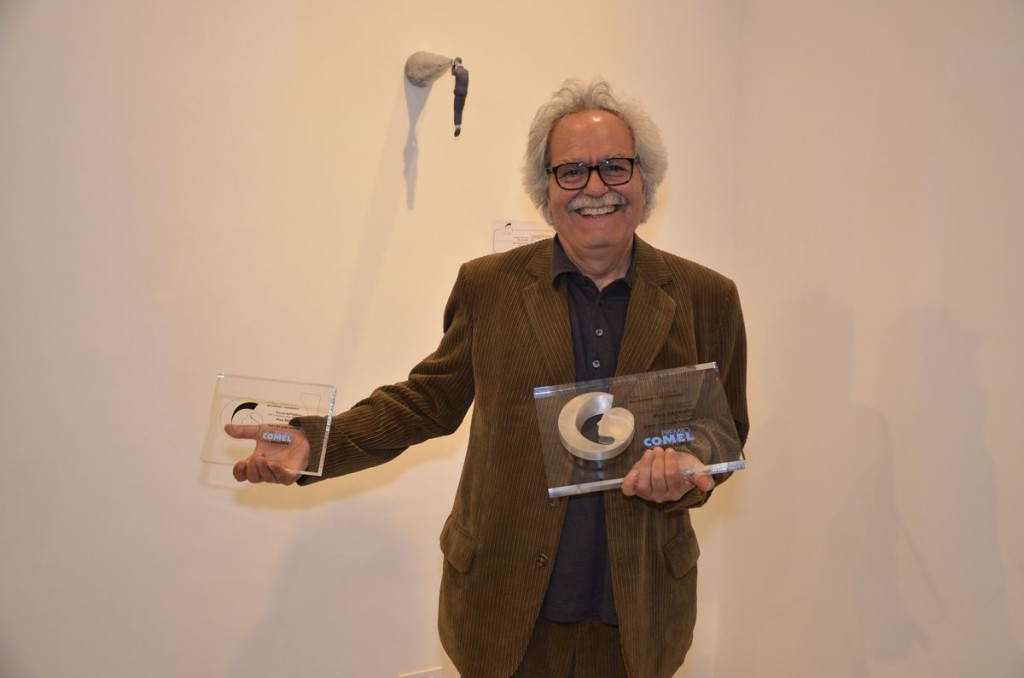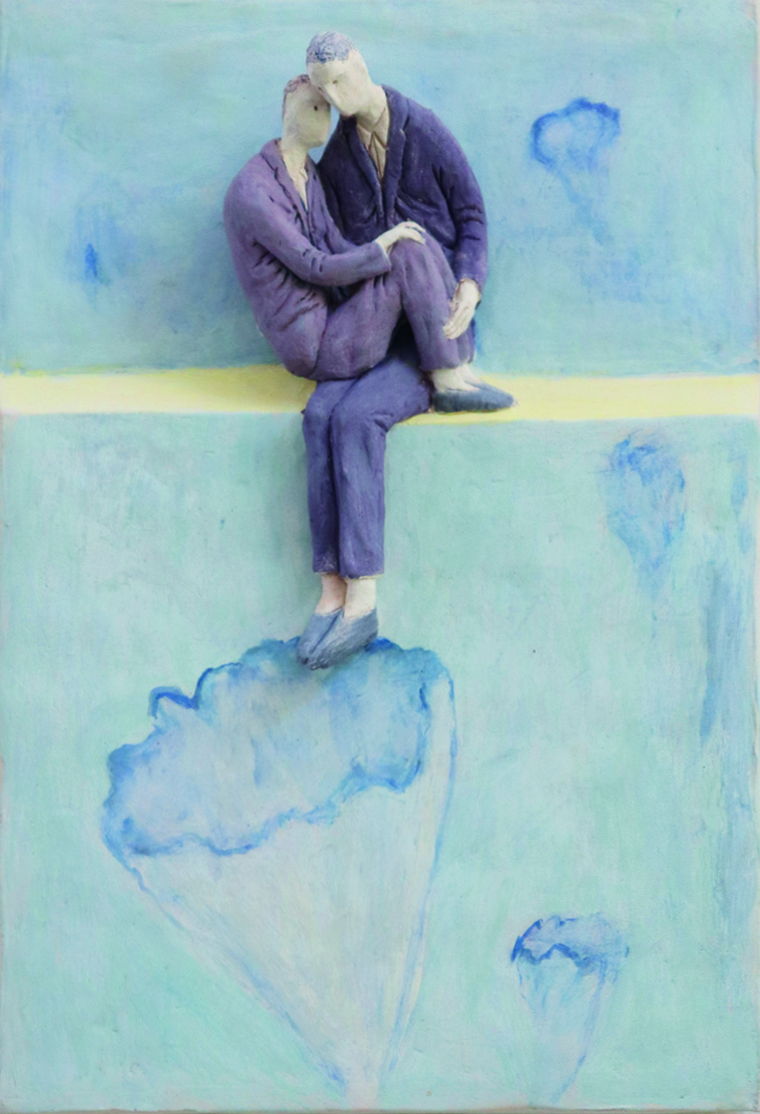THE 2014 COMEL AWARD FINALISTS
Pino Deodato
Milan, ITALY
www.pinodeodato.it
www.pinodeodato.it

THE 2014 COMEL AWARD FINALISTS
Pino Deodato
Milan, ITALY
www.pinodeodato.it
www.pinodeodato.it
BIOGRAPHICAL NOTES
Pino Deodato originally comes from the province of Vibo Valentia (in the south of Italy). He moved to Milan to study at the Accademia of Brera. Here he came into contact with Milanese leading artists. Among them was Spadari, to whom he became assistant. He took part in important events in Europe and in the 70s and 80s he devoted himself to the mural paintings related to social issues. Since the early 90s his artistic research has had a magical realism that leads him to create characters that tell stories and reveal men’s attitudes through delicate allegories.
ARTWORK IN CONTEST

COLUI CHE VEDE LONTANO, 2013
SCULPTURE - Polychrome aluminium
cm 25 x 9 x 23
In the work of Pino Deodato a little man suspended in the air explores through a funnel attached to the wall. The prospect of reading is reversed. The little man looks inside, as if looking inside of himself. The ironic figure of Deodato has its fulfillment in the suggestion of the style, a style which attaches a dreamlike and fantastic intimacy, beautifully and subtly allusive narrative, which refers to a look of the soul.
AWARDS
WINNER OF THE COMEL AWARD AND THE AUDIENCE AWARD 2014
for the following reasons:
“Featured by a clever technique that works aluminum very effectively and exploits the expressive possibilities applying them to the small size, “Colui che vede lontano” is characterized by an acute irony, which makes the visionary energy contained in the work speakable. In line with the surrealist avant-garde, the desire to see and to listen together, mobilizing all senses, drives the character represented, and with him the audience he plays, towards a diverse horizon, beyond the threshold, a threshold which, however, may be defined resistant and refractory, and towards a life which may be thought of as altered, available for a new path.”
(from the minutes of the jury)

Interview by Rosa Manauzzi
I often use metaphors to describe the world, and I think it’s the easiest way to describe complex things that concern the daily life of each of us.
I would start this informative exploration from the beginning, from the first work of Art that you loved and that made you understand that your path would be art.
My father was given a book by the association of farmers’ category, which, in addition to giving advice on farming techniques, showed images of artists, from Leonardo to Piero della Francesca. I might have been 6-7 years. The work that I still remember from that book and I was extremely impressed by portrayed Henry-Rousseau’s ball players.
What was your academic background and how did it change the way you understand and create Art works?
Immediately after the fifth grade, I started studying in an Art school, and I went on also the following school years, during the high school. Later, for a few years, I attended sculpture courses at Brera Academy, in Milan. However, I spent the most significant formative years working as an assistant in Giangiacomo Spadari’s studio.
Your works have been defined metaphysical, surrealistic, dreamlike… Do you recognize yourself in any of these definitions?
There have already been surrealist, metaphysical, and dreamlike artists and they belong to the History of Art. I do not particularly like these definitions for my work. It would be nice that some historian or curator tried to propose a new definition within which to place my work.

.
You are frequently present in places “of knowledge”, such as libraries, places that are rarely visited today and are a bit like ‘sacred temples’ for those who still prefer to spend their time there. Your ‘little thinkers’ will then find themselves being part of this silent sacredness. Does it make sense to bring a work of art in places from which the public is nowadays gradually moving away?
Collectors, intellectuals, housewives, young and old people are fond of my ‘little thinkers’. That makes me very happy. I often use metaphors to describe the world, and I think it’s the easiest way to describe complex things that concern the daily life of each of us.
Could artists exist without an audience?
Sure, they may exist. I believe that, first of all, the artist must work for himself. It is not a coincidence that so many artists who worked in the silence of their own studio, have been recognized as such once they had passed away.

La cura in una stanza
What is the work you created that you loved the most so far?
It is an old picture of the ’80s. The title was ‘The suicide of the painter’. I had painted a cliff with a beautiful sky. And at that moment I thought – in a metaphorical sense – that after doing such a beautiful work I might throw myself off that cliff.
In the 70’s when the political climate was difficult, Art found expression in the murals. It accompanied in fact marches and slogans. Those were times that required an active, external participation. How did you experience them and what has changed since then? Isn’t there a global demand for protest today? Why has Art found peace instead?
For me and for all my generation the 70s were years of cultural, artistic, social and political sharing. They were difficult moments, nice and difficult at the same time. With my skills and my work I tried to contribute creatively to the changes of society I was witnessing. Since then things have not changed much. There are some artists who respond to this need for protest against the system directly, without filters. Instead, there are people, like me, who answer the problems of contemporary man with poetry and metaphorical language, made up of exhortations to reflect and find solutions to live in harmony with the world and things around us.
What is the position of Italy in Contemporary Art nowadays? Is there still a Europe charmed by Italian Art? (By the current one I mean).
As for the Italian Contemporary Art I think we are overly attached to foreign things. Everything that comes from outside seems to be more important. It is time instead of enhancing Italian artists and the Italian Art of my generation, those of the past and the future.
What would you recommend to a young man or woman who wants to start a career today? Is it possible to reconcile the needs of daily life and free artistic expression?
I would recommend them to keep up with the news about what’s happening in contemporary art today. Going to exhibitions, reading professional journals, travelling if possible and working hard. You can reconcile the two things, although it is difficult. Ideally they should find a job that supports their activity as an artist, at least in the beginning.
You can live off Art, but it depends on the market. If the market does not respond, you have to find sustenance in other activities, preferably related to Art.

